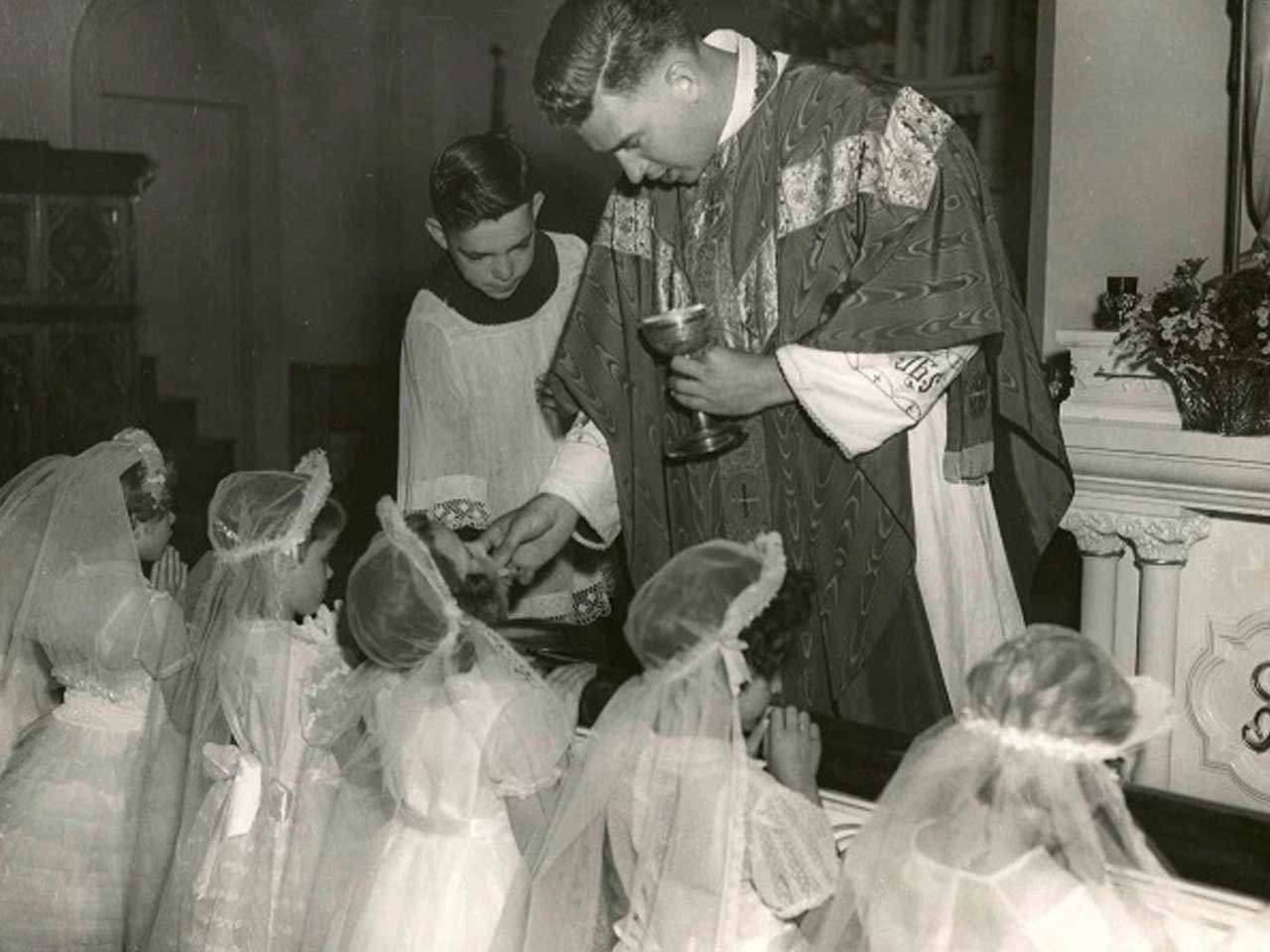For I have learnt for a fact that nothing so effectively obtains, retains and regains grace, as that we should always be found not high-minded before God, but filled with holy fear. –St. Bernard of Clairveux

On April 11, 2017, the Diocese of Madison joined with Bishop Morlino at the Chrism Mass. It was a glorious evening, with many of our priests in attendance.
During Bishop Morlino’s homily, he alluded to a recent March 31 address by Cardinal Sarah, the “Vatican Liturgy Chief” (Prefect of the Congregation for Divine Worship and the Discipline of the Sacraments). In his address, Cardinal Sarah was forthright in calling for a recognition of “the serious and profound crisis” which, since the Council, has affected the liturgy by placing man and not God at the center of worship:
“The serious crisis of faith, not only at the level of the Christian faithful but also and especially among many priests and bishops, has made us incapable of understanding the Eucharistic liturgy as a sacrifice, as identical to the act performed once and for all by Jesus Christ, making present the Sacrifice of the Cross in a non-bloody manner, throughout the Church, through different ages, places, peoples and nations,” he said.
“There is often a sacrilegious tendency to reduce the Holy Mass to a simple convivial meal, the celebration of a profane feast, the community’s celebration of itself, or even worse, a terrible diversion from the anguish of a life that no longer has meaning or from the fear of meeting God face to face, because His glance unveils and obliges us to look truly and unflinchingly at the ugliness of our interior life. But the Holy Mass is not a diversion. It is the living sacrifice of Christ who died on the cross to free us from sin and death, for the purpose of revealing the love and the glory of God the Father,” he added.
The notion that the Church is in crisis is not new. Pope Benedict XVI wrote, “I am convinced that the crisis in the Church that we are experiencing today is, to a large extent, due to the disintegration of the liturgy.”
In his Chrism Mass homily, Bishop Morlino highlighted the fact that the Catholic Church is very good at social issues at every level – Catholic organizations, dioceses, parishes and individuals – but, ours is a crisis of faith, revealed by less than 25% of Catholics attending Mass any longer (less than 5% in many parts of Europe). Where we are failing is in a lack of fervor in our faith, Bishop stated. This is most evident in how we, as priests, are offering the Mass, and how the faithful are praying the Mass.
Bishop Morlino went on to speak about “actuosa participatio” as being more about “actual participation” than “active participation.” Bishop lamented that we seem to feel everyone needs to be busy “doing something” at the Mass, when it is more important that we are deeply contemplating what is being done at the Mass … that God is made Present – Body, Blood, Soul and Divinity. This should stir our soul and fill us with awe and wonder. But, are we too busy to take notice?
A year ago, Bishop called for all tabernacles to be in church and in the center of the sanctuary. Last Fall, as part of the Bishop’s overall plan to add sacred beauty and reverence to all Masses in his diocese, Bishop Morlino encouraged all of his priests to strongly consider Cardinal Sarah’s call to offer the Mass ad orientem. Bishop Morlino then announced he would, from now on, be offering all of his Masses ad orientem.
Now, during last evening’s Chrism Mass, Bishop Morlino concluded his homily by appealing to all of his priests in his diocese to strongly encourage their parishioners to begin receiving Communion on the tongue while kneeling, beginning this September.
Praise be Jesus Christ! Now and forever!
Originally published at RomanCatholicMan.com. Updated and reprinted with permission.


